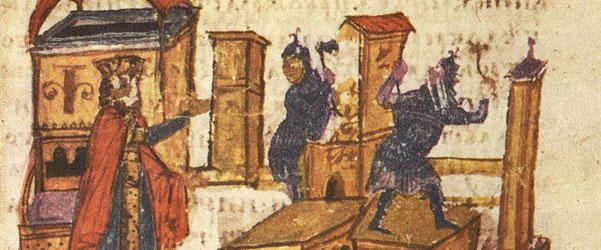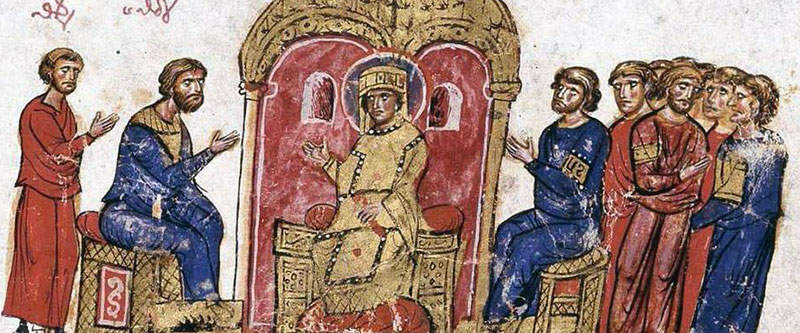Constantine V was born in the fall of 718 and died in 775. He assumed formal responsibilities of governing the Byzantine empire as a co-regent of sorts in the 730s. He became the sole ruler of Byzantium in 740 when his father died. Much of Constantine V’s reign is remembered for his involvement in the iconoclastic controversy begun by his father Leo III in 726. The early years of his reign were preoccupied with weathering his brother-in-law Artavasdus’ attempts to dethrone him. However, in 752 that he did pick up where his father left off. and did so from a more theological and less pragmatic angle.
Constantine approached whether images of Christ are legitimate for the Christian from a Christological perspective. It is ironic in that John of Damascus uses the same doctrine to justify icons and images. However, though they share the same doctrine, their conclusions are far apart. Whereas John argues that because Christ is truly man His human nature may be drawn or sculpted, Constantine argues the opposite. In light of the union of Christ’s human and divine natures in the one person Constantine argues that “the depiction of the prosopon (or hypostasis) which came into existence as the result of the union of the two natures cannot be accomplished, since of necessity this would involve the circumscription of the immaterial, divine nature.”[1] In other words, because of the union between Christ’s human and divine natures you cannot represent one without the other.
Constantine is reaching back to the fourth ecumenical Council of Chalcedon of 451 which declared the human and divine natures of Christ to exist without confusion or separation. At this point Constantine builds on his father’s initial second commandment argument by showing its relation to the orthodox articulation of the definition of Christ at Chalcedon. And with the iconoclast position in the ascendency, Constantine looks to formalize and bolster it with the approval of the church, which he does by calling the Council of Hiereia in 754.
[1] Stephen Gero, Byzantine Iconoclasm During the Reign of Constantine V (Louvain: Secretariat du Corpus SCO, 1977), 41.


